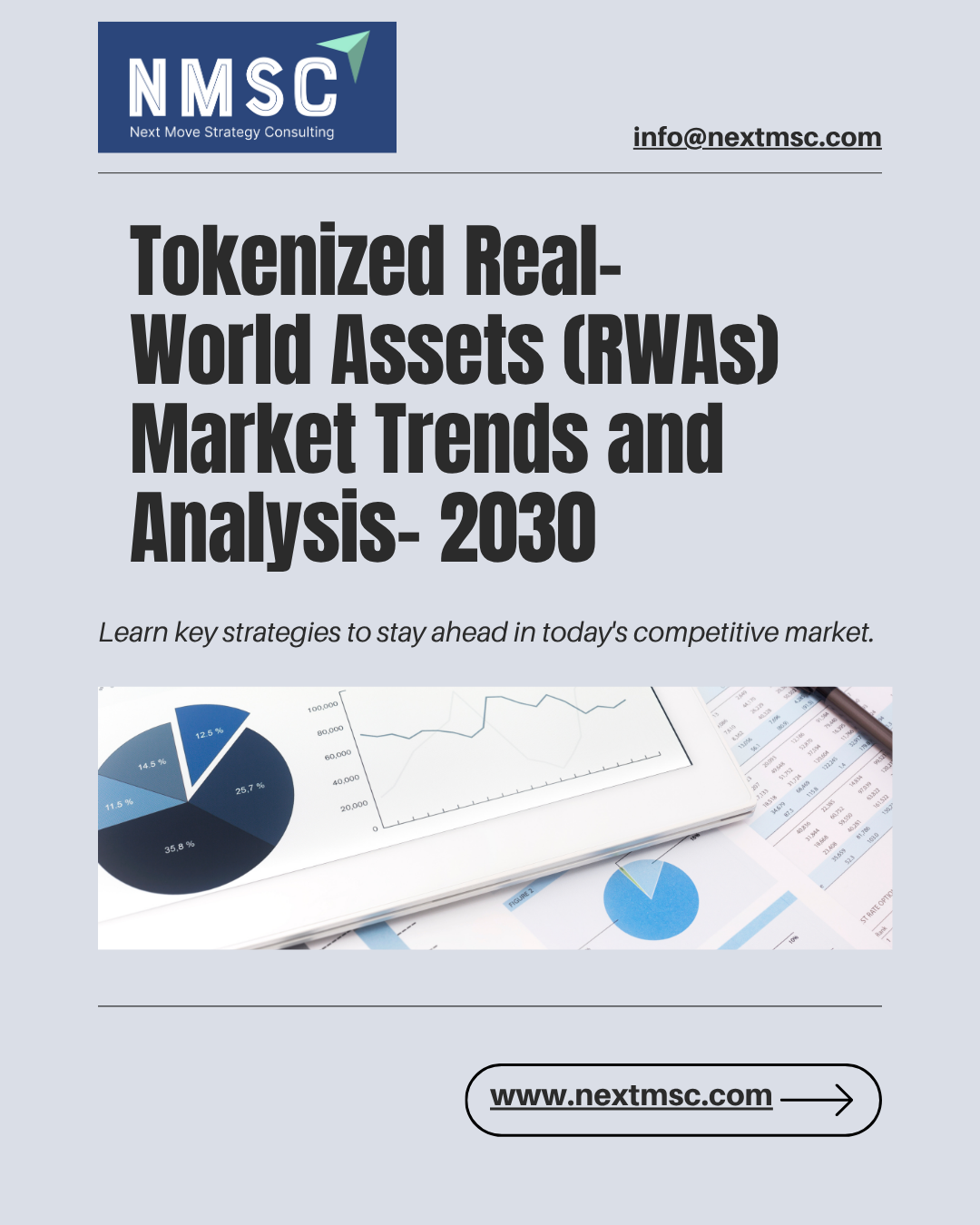Next Move Strategy Consulting
Tokenized Real-World Assets (RWAs) Market Analysis: Challenges, Growth Factors, and Future Outlook
Tokenized Real-World Assets (RWAs) Market Analysis: Challenges, Growth Factors, and Future Outlook
Couldn't load pickup availability
The global Tokenized Real-World Assets (RWAs) Market is projected to reach USD 612.71 billion by the end of 2025. By 2030, the market is expected to surge to USD 9.43 trillion, growing at a remarkable CAGR of 72.8% between 2025 and 2030.
Real estate is expected to account for a significant portion of this value, as tokenization enables fractional ownership, lowering barriers to entry and allowing smaller investors access to previously exclusive high-value assets. In parallel, the tokenization of environmental assets—such as carbon credits and renewable energy certificates—is emerging as a key growth segment. The volume of tokenized carbon credit issuances rose sharply in 2024, driven by increasing corporate commitments to net-zero targets.
North America, led by the United States, holds a dominant position in the market. The U.S. benefits from mature blockchain infrastructure and progressive state-level regulations. Canada is also advancing through sandbox initiatives designed to foster innovation in tokenized securities.
Leading players in the tokenized RWAs ecosystem include BlackRock, JPMorgan, Franklin Templeton, WisdomTree, Ondo Finance, Maple Finance, Securitize, Polytrade, Swarm Markets, Aptos Labs, Centrifuge, Goldfinch, Mantra Chain, IX Swap, and Taurus. A defining trend is institutional integration, with traditional financial institutions (TradFi) increasingly launching tokenized funds and platforms. Notable examples include BlackRock’s BUIDL fund and JPMorgan’s Tokenized Collateral Network (TCN), highlighting the accelerating convergence of TradFi and decentralized finance (DeFi).
Share

